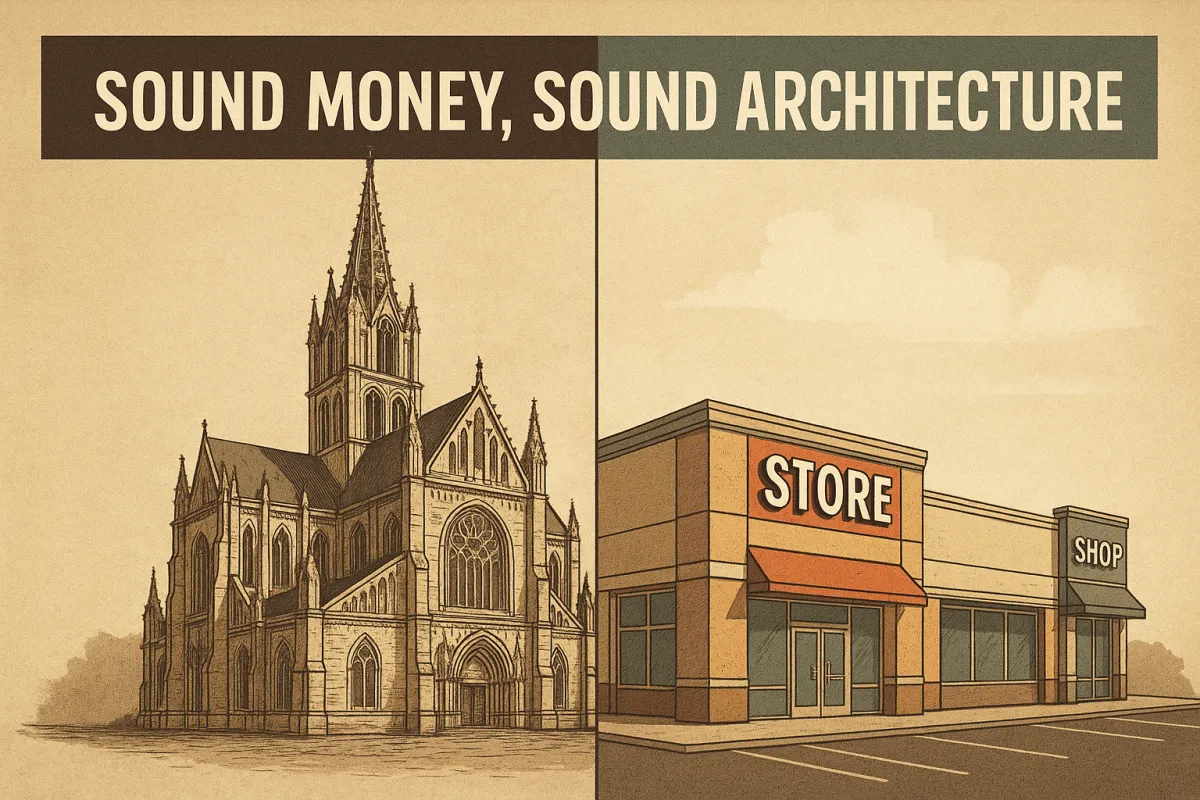
Sound Money, Sound Architecture: Why Cathedrals Endure and Strip Malls Crumble
Travel to any medieval European city and you’ll find cathedrals, castles, and bridges that have stood for centuries. They weren’t built for a season. They were built for generations.
Now drive through a modern suburb. What do you see? Cookie-cutter homes, disposable strip malls, concrete tilt-ups designed to be demolished and rebuilt within decades. The contrast is stark — and it’s not just about aesthetics. It’s about money.
Money Shapes Culture, Culture Shapes Buildings
Architecture is more than engineering. It’s a reflection of values. What societies build depends on what they believe about time, permanence, and legacy.
Sound money — money that holds its value — lowers time preference. It rewards patience, saving, and investment. Societies with sound money think long-term, and their buildings reflect that permanence.
Unsound money does the opposite. Inflation punishes savers and pushes people toward debt and consumption. When the financial foundation is fragile, architecture follows suit — cheap, fast, disposable.
Cathedrals and Cathedrals of Time
Cathedrals took centuries to build. The architects who laid the first stones knew they wouldn’t live to see completion. But under hard money systems like gold and silver, capital could be saved and passed on. Generations worked toward a shared vision, secure that the value of their contributions would endure.
These buildings were not just places of worship. They were symbols of stability. They told a community: “We are here to stay.”
The Rise of the Strip Mall
In fiat economies, the opposite dynamic dominates. With money losing value year after year, the rational choice is to build quickly and cheaply. Debt-financed developers maximize short-term profits. Investors demand returns in quarters, not centuries.
The result? Box stores, strip malls, disposable suburban sprawl. Structures designed for quick cash flow, not for beauty or endurance. Architecture mirrors the culture of high time preference — temporary, fragile, forgettable.
Bitcoin and the Return of Permanence
Bitcoin changes the equation. By fixing the supply of money, it restores the ability to save across generations. It rewards patience and lowers time preference. With this foundation, culture can shift back toward permanence.
What could cities look like on a Bitcoin standard? Imagine civic buildings designed to last centuries. Homes built to be passed down, not flipped. Public spaces created for beauty and legacy rather than lowest-cost compliance.
Sound money doesn’t just preserve wealth. It preserves civilization’s will to build for the future.
From Disposable to Enduring
Our built environment reflects our monetary environment. Fiat builds strip malls. Sound money builds cathedrals.
Civilization’s beauty and permanence depend on the foundation of its money. If we want to leave behind more than disposable concrete boxes, we must fix the money first.



